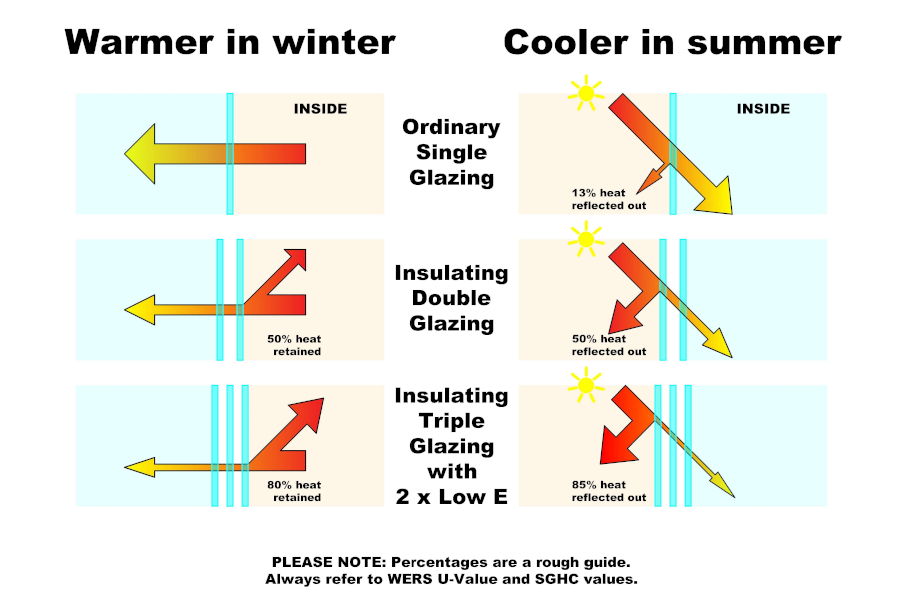All Categories
Featured
Table of Contents
What Are The Benefits Of Double Glazed Windows? in West Swan Western Australia
That window can transmit more solar heat in winter season than in summer. A west-facing window on a summer season's afternoon has an angle of occurrence from near 0 approximately 30 with a big reliable area of solar radiation. A north-facing window, in summer season, has a high angle of occurrence and a low efficient area of solar radiation, so can transfer less heat than a west-facing one.
You can rapidly and quickly improve the thermal performance of your house by changing your windows. This is one of the most efficient methods of restoration to achieve enhanced thermal convenience. There are thousands of types of glass and frames to pick from. Picking the right ones is crucial to improving the energy performance of your home.
Double Glazing Perth in Hocking Perth
Single glazing with clear glass is not really effective when it comes to heat loss or gain. To enhance efficiency, you can use single glazing with a more energy-efficient type of glass such as low emissivity (low-e) glass.
The energy performance of IGUs also depends on: the homes of each layer of glass. Various glass types (for example, clear and low-e glass) can be put together in an IGU.
Insulated Glass Unit – Igu in East Fremantle WA

IGU cavities can be filled with air or a more inert, low-conductivity gas such as argon the width of the cavity. Cavity thickness is usually 6 to 18mm. Wider cavities supply lower (much better) U values, with 12mm generally accepted as the preferred space how well the cavity is sealed. Cavities must be dry and well sealed to prevent moisture getting in.
If argon is set up to the cavity in location of air, moisture is dependably omitted the level of desiccant (drying agent). The spacer (metal or polymer strip) that separates the glass layers consists of a desiccant to take in any moisture. Insufficient desiccant may trigger wetness to condense on the glass surface in cold conditions, minimizing thermal performance.
Double Glazing - Albury - Twin Cities Glass in Langford Perth
In fact, IGUs can deliver better energy performance for all environments, especially in heated and air-conditioned houses. Cross-section detail of single, double and triple-glazing systems Low emissivity glass (typically referred to as low-e glass) minimizes heat transfer. Low-e glass might be either high or low transmission: High transmission low-e glass has a finishing that allows daylight from the sun to enter your house to attain great solar heat gain, but minimizes the quantity of the long wavelength infrared heat that can leave back through the window.
Low-e glass has either a pyrolytic finish or a vacuum-deposited thin movie metal finishing. Pyrolytic coatings are durable and can be utilized for any glazing; vacuum-deposited coatings are soft and are just utilized within IGUs. Low-e coatings can substantially improve both U value and SHGC; nevertheless, they need to be utilized properly or they will either deteriorate or stop working to carry out as required.
Double Glazing - Windows - Doors in Millendon Western Australia
Low-e finishings can be used in mix with clear, toned or reflective glass. Low-e coatings on glazing can minimize heat transfer where required Photo: Department of Market, Science, Energy and Resources Toned glass has colouring ingredients included during manufacture. It is available in numerous colours, usually bronze, grey, blue and green.
Latest Posts
Faq in Bedfordale Perth
What Are Double Glazed Windows? - Build in Duncraig Western Australia
Single Glazed Vs Double Glazed Windows - Ultimate Guide in Kensington Perth